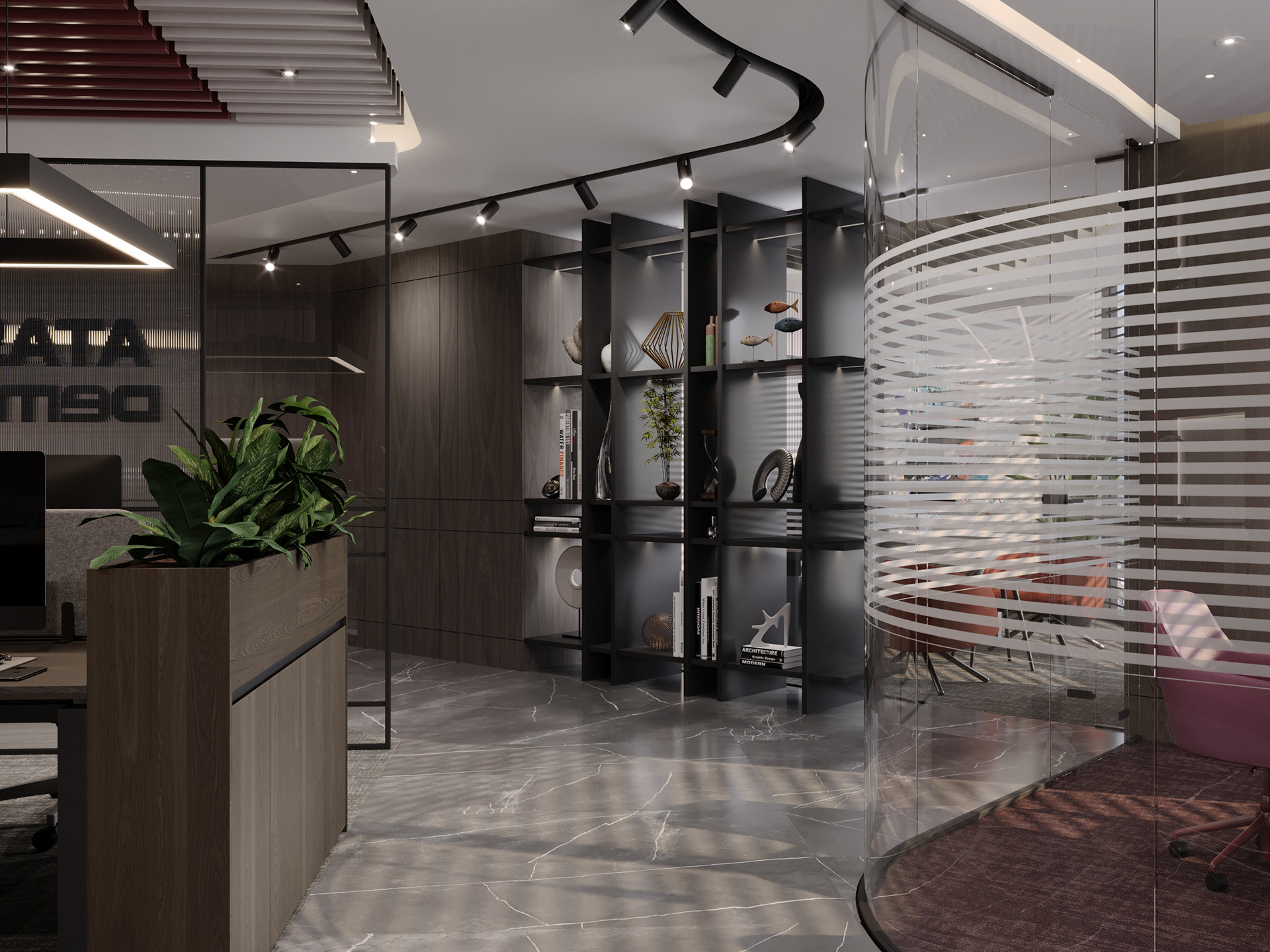The Icons Project is a developed project based on cult furniture designs. Its consists of three phases: Reserch, illustration and design. First, I make research on the icons and the era in which they were designed. In the second phase, I create digitial illusrations of the icons: in my own design style. In the final phase, I design unique concept spaces for each icon. Each space has its own distinct concept and I make a conscious effort to differentiate them from one another. This approach helps to epand the range of my design language. At the end of each icon project, I compile all the illustrations into a poster design.
MR 10
MIES VAN DER ROHE / 1927
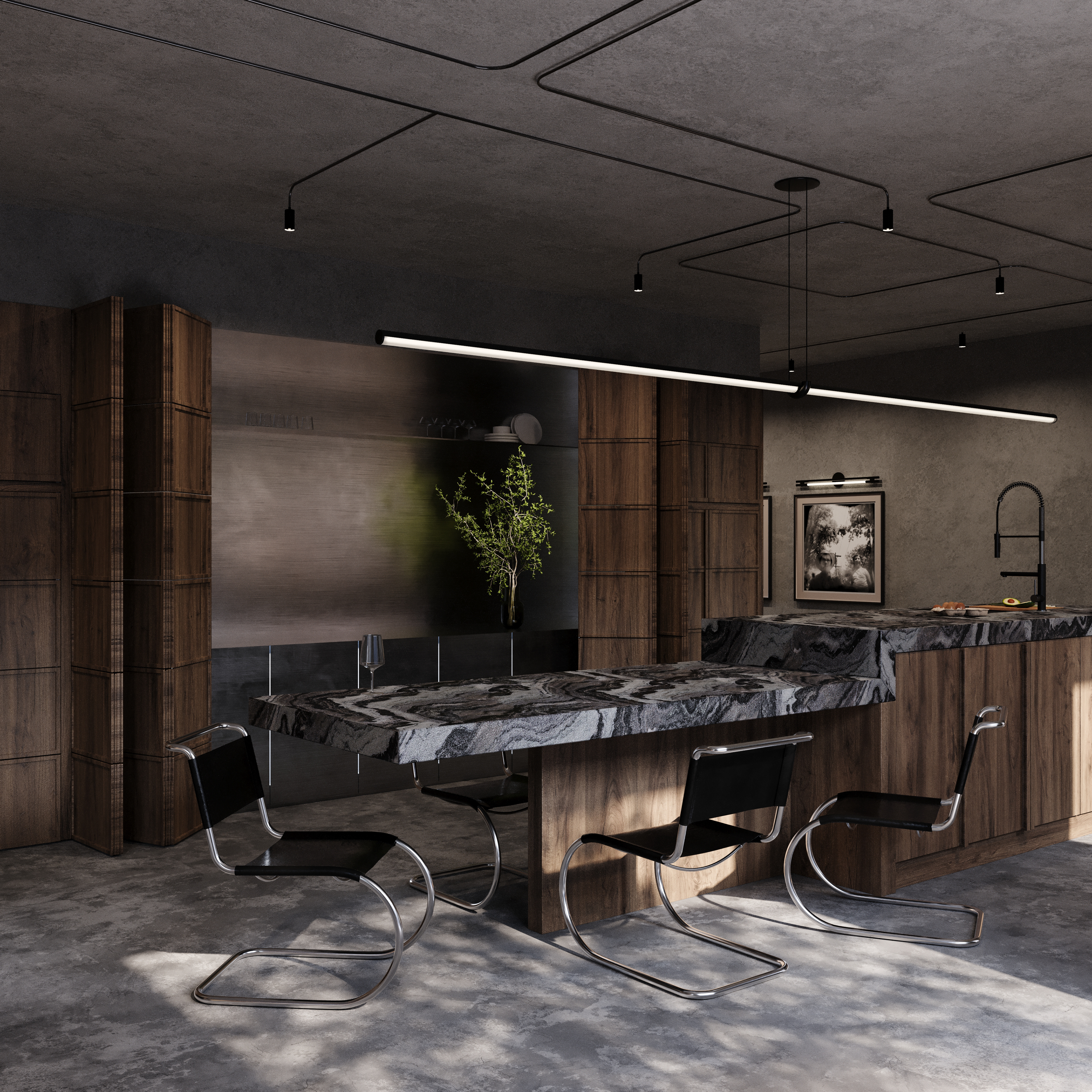
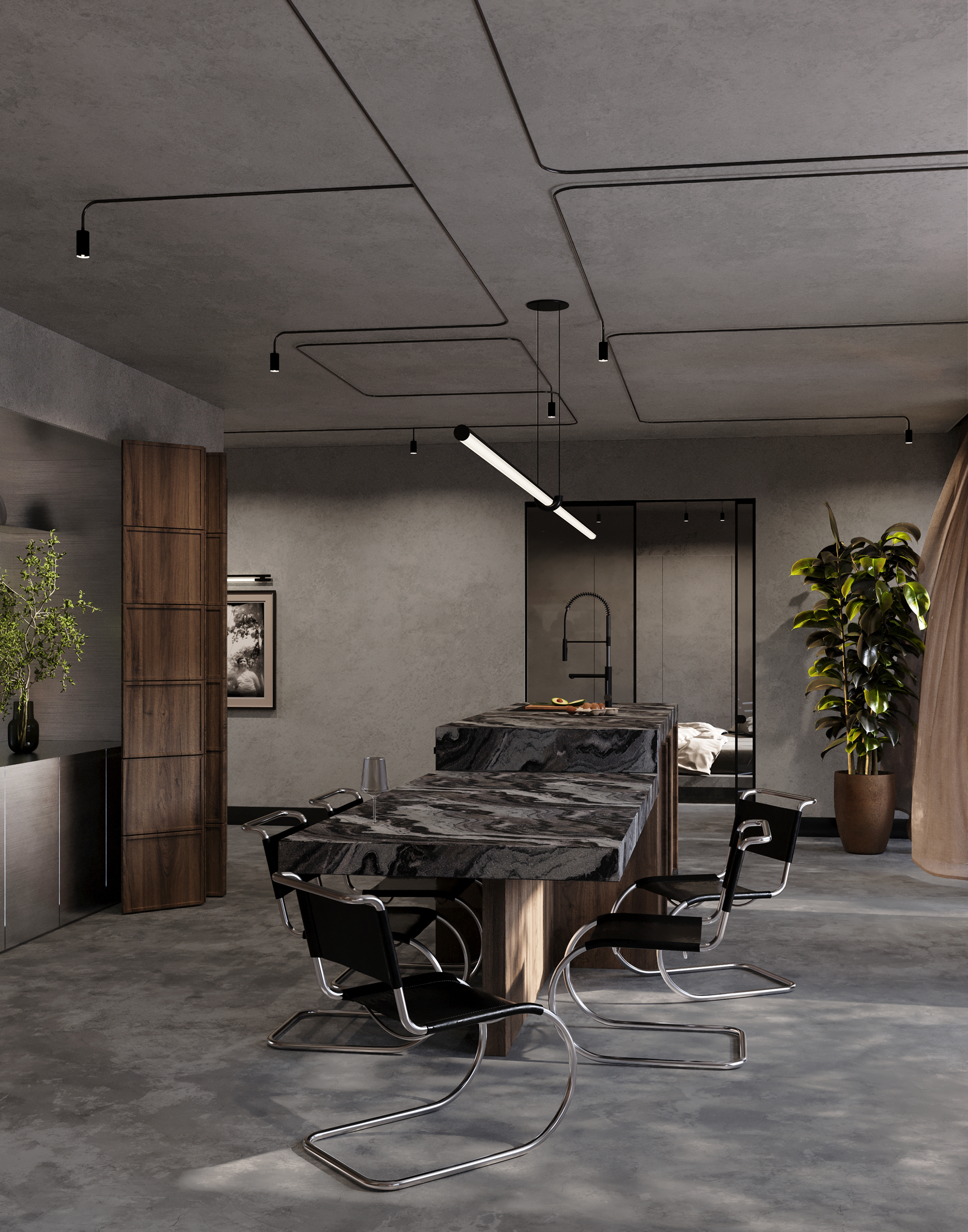
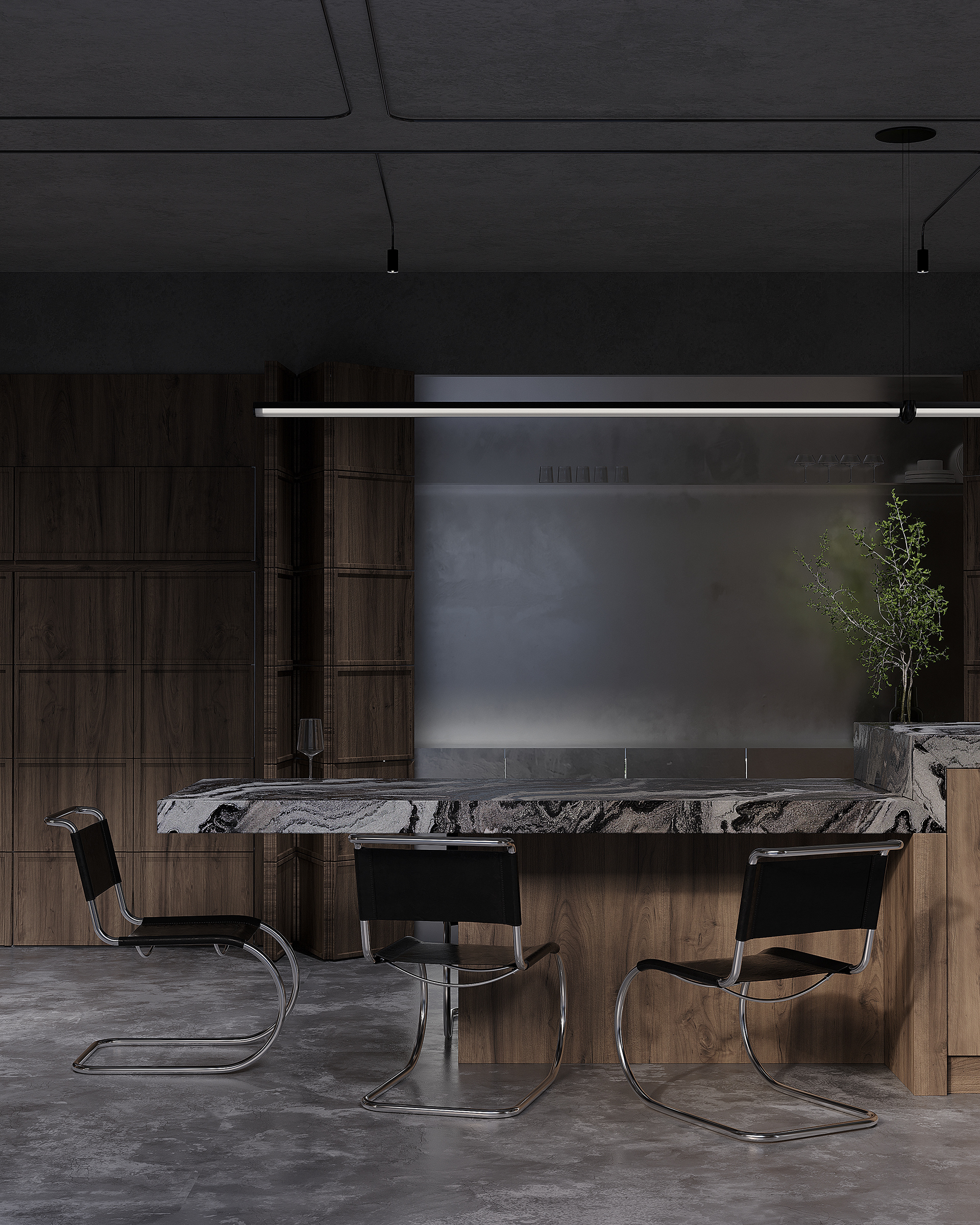
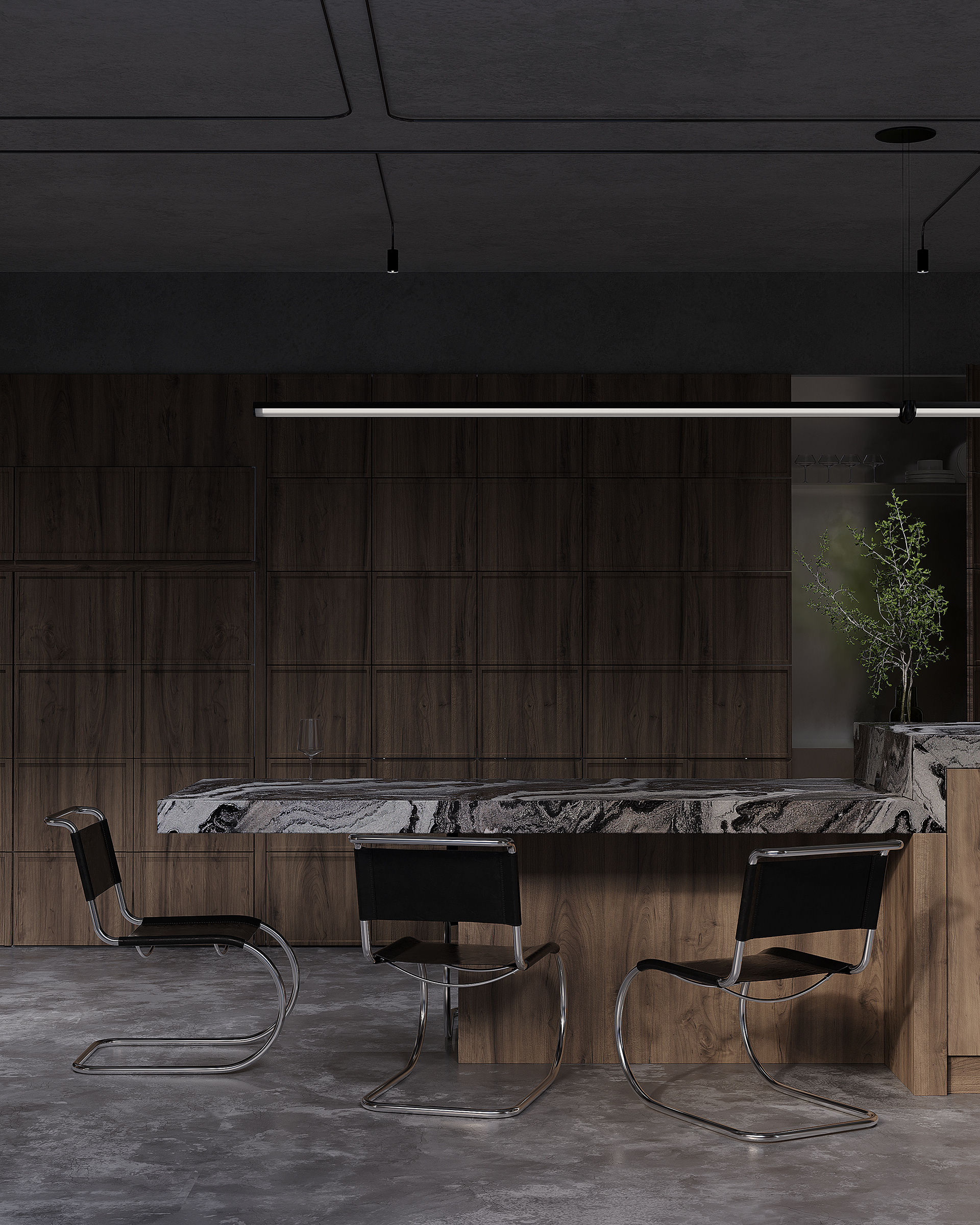
MR 10 is, in my opinion, a silent yet remarkable icon that can adapt to ant interior. For The Icons Project, I chose to place it in a classic-industrial space. I developed a conceptual residential project in Bali. I explored a wide range of materials inspired by the MR10's steel-leather combination, including stainless steel, wood, marble and concrete plaster. My main goal was to create s space that reflects silent spectacularity. I designed an island kitchen with a cooking area to ensure functional use of space. At the same time, I incorporated a hidden kitchenette behind wooden cabinet door that can be sliding. I chose stainless steel for this hidden area to add an unexpectedand interesting touch.
About The MR 10 Chair,
It was designed by Ludwig Mies van der Rohe in 1927 and further developed for an exhibition in Sttutgart. This exhibition became a symbolic milestone the birth of modern architecture. The MR10 Chair was crafted by bending a continuous steel tube- a technique inspired by bicycle handlebars. Its cantilevered form introduced a revolutionary innovation: the bending of steel allowed the sitter's weight to be distributed to the floor without the need for rear legs. Another groundbreaking aspect was that Mies created a design that embodied the principles of minimalism even before famous "Less is More." philosophy was articulated. Although The MR10 Chair is often associated with Bauhaus movement, Mies designed it before the Bauhaus style was fully established. Today, The MR10 is recognized as an icon of modern design, featured in desgin museums around the world. Licensed reproductions of the chair are currently produced by Knoll.
PANTON
verner panTON / 1959
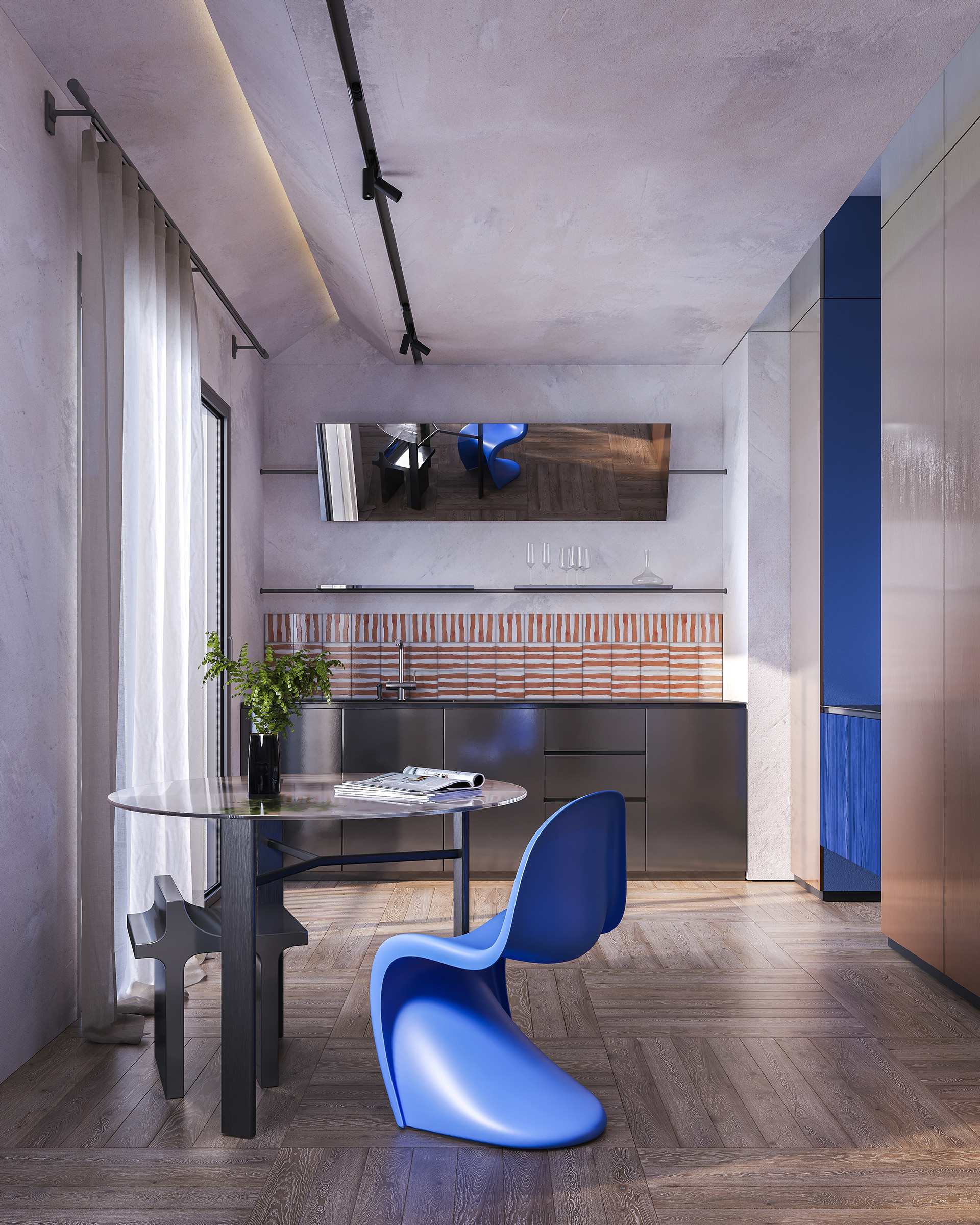



In my opinion, the Panton Chair is a dynamic design due to its flowing form and wide variety of color options. For this reason, I chose to incorporate it into a conceptual kitchen project for an apartment in New York City-a space that could also reflect dynamism through a mix of colors and materials. I selected the blue version of the chair, and aimed to make blue the key color within the space. I used blue lacquered wood in the kitchenette area, paired with cabinet doors featuring a gradient effect, creating a visual hierarchy within the space. To ensure the Panton Chair did not overpower the environment, I supported it with complementary orange tones placed in the visible area. To modernize the space, I used stainless steel cabinets, custom-designed ceramic surfaces in the kitchen, and wooden flooring arranged in a unique pattern. I chose a glass dining table so the chair could remain visually prominent as the focal point of the space, while still coexisting harmoniously with the other elements.
About the Panton Chair,
The Panton Chair was designed by Verner Panton in 1960. One of the most important features of this design is its historical signifance as the first chair made from a single piece of injection-molded plastic. Its distinctive S-shaped form uniquely integrates both the seat and leg support into one continuous piece. After extensive material experimentation, the chair is now produced in polypropylene which makes it both durable and available in a wide range of colors. The design reflects the Space Age aesthetics of the 60's: organic, futuristic and influenced by Pop-art. Today, The Panton Chair is exhibited in major museums, and Vitra continues to produce a verison that remains faithful to the original design.
eames lounge chair
charles & ray eames / 1956
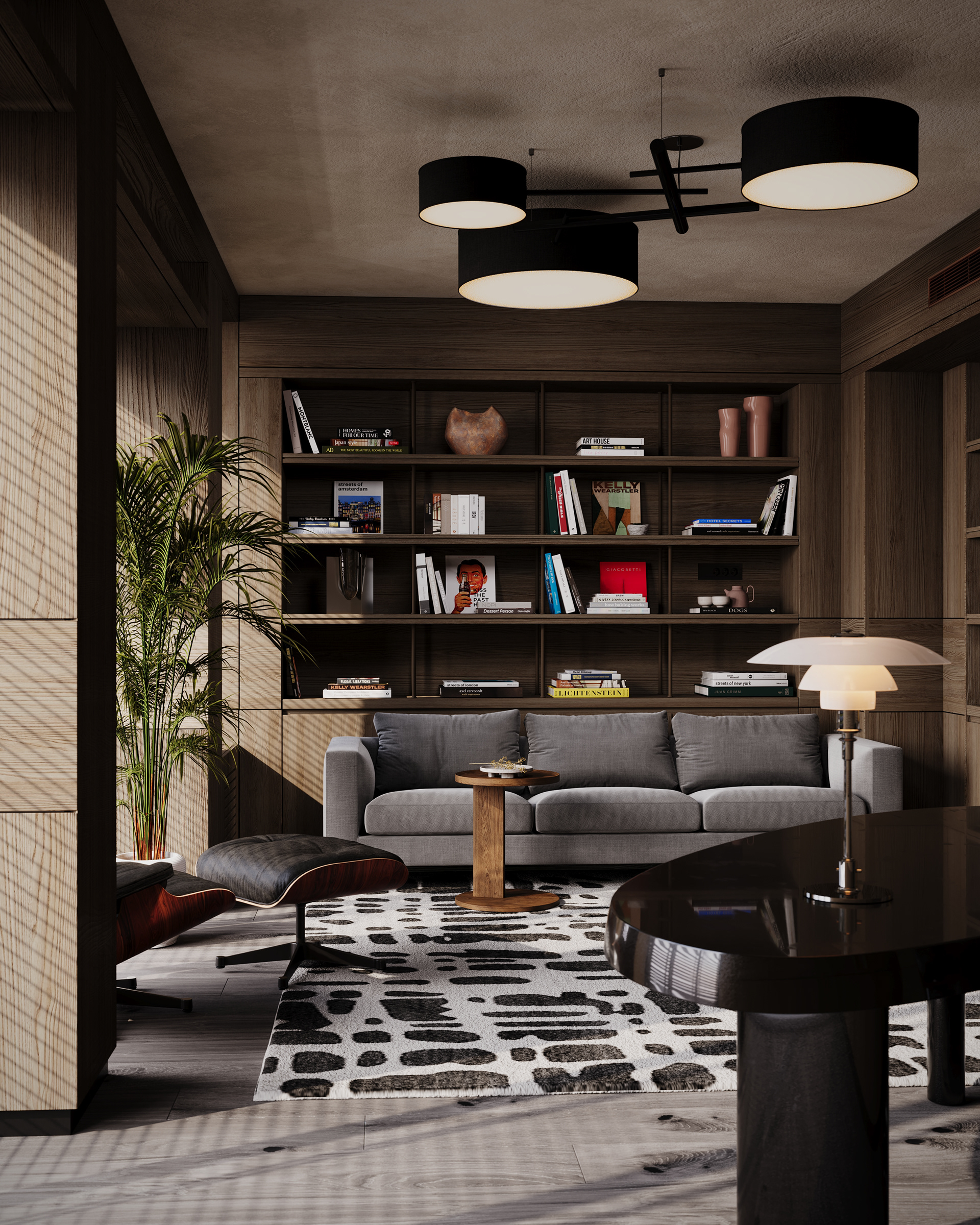
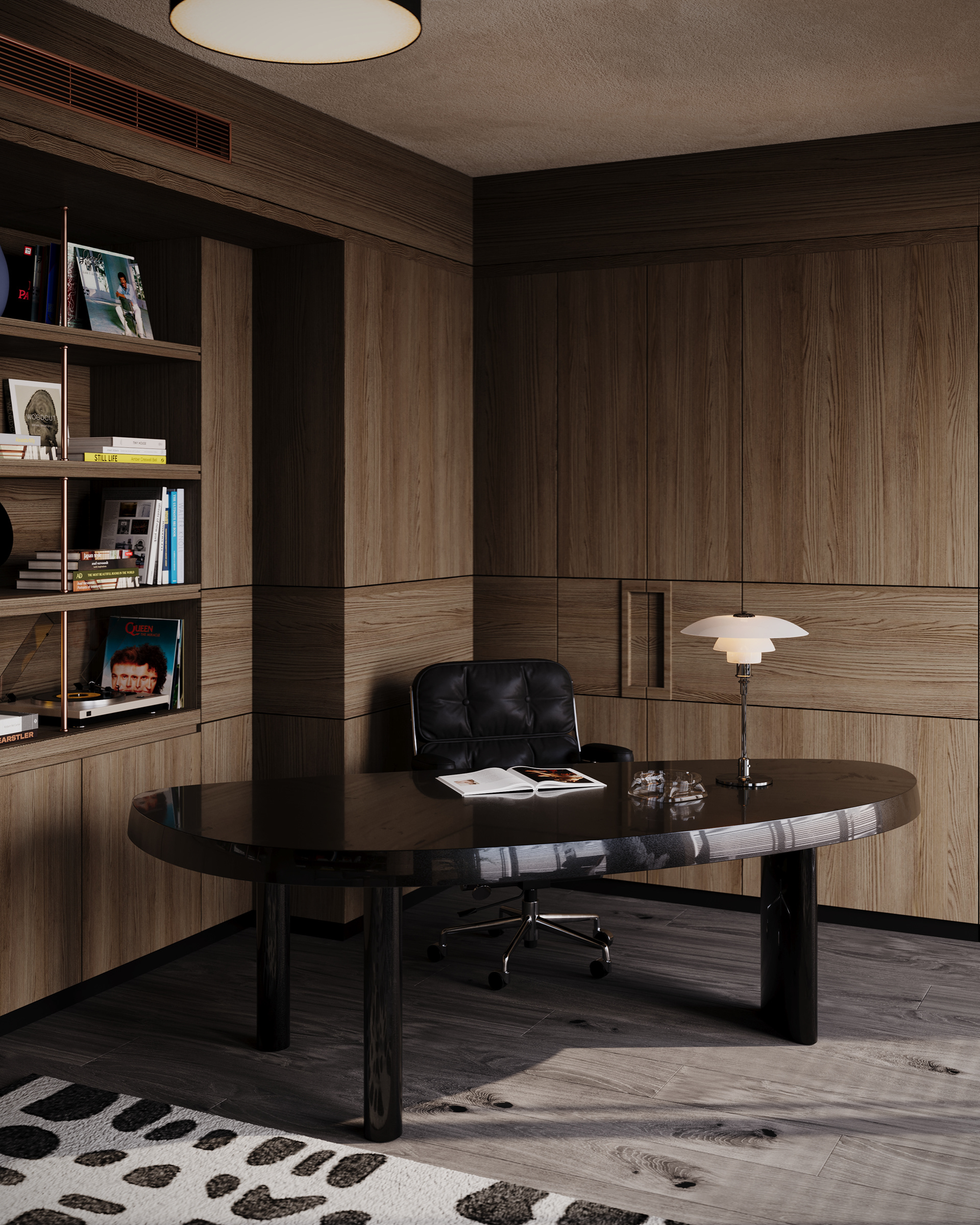
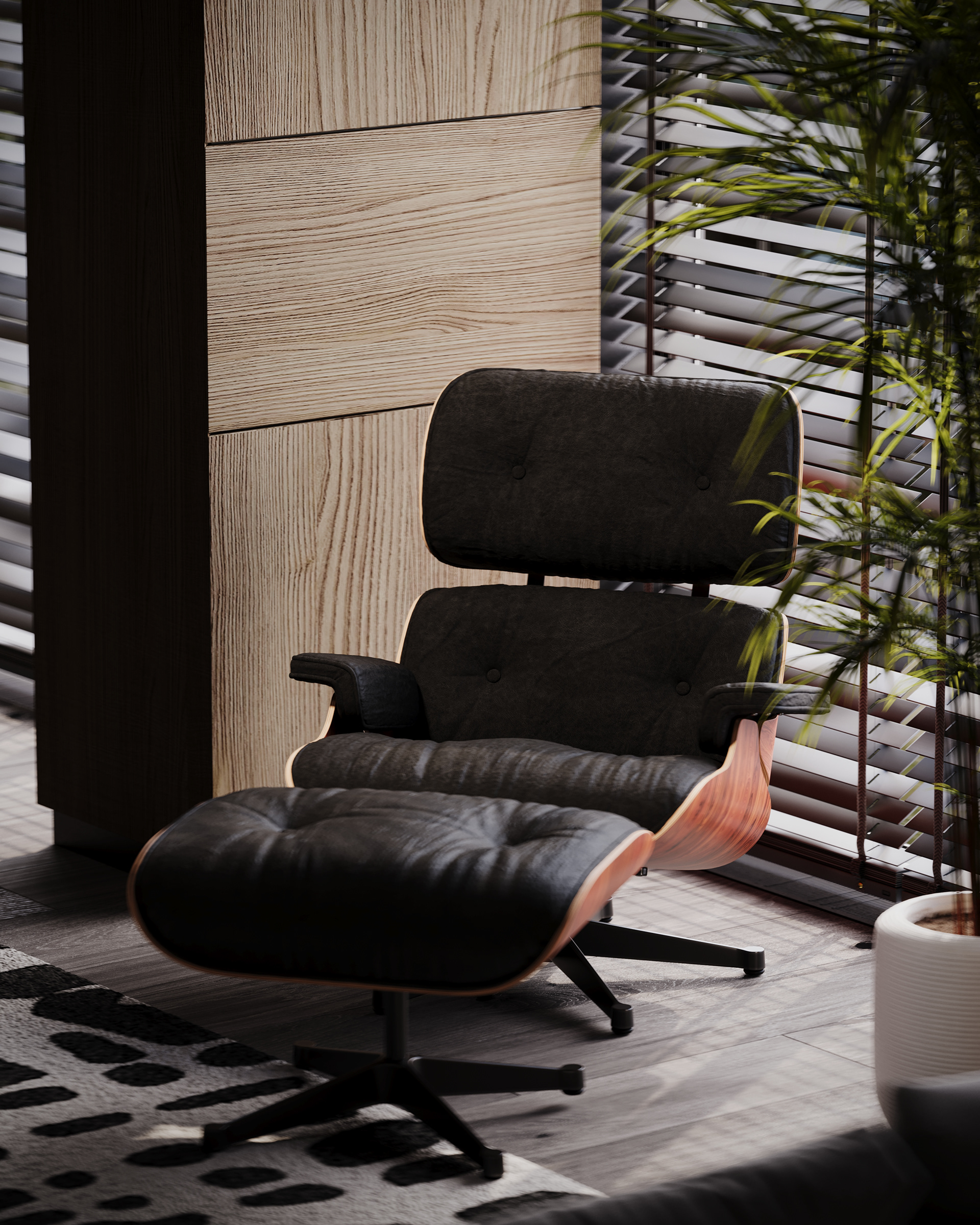
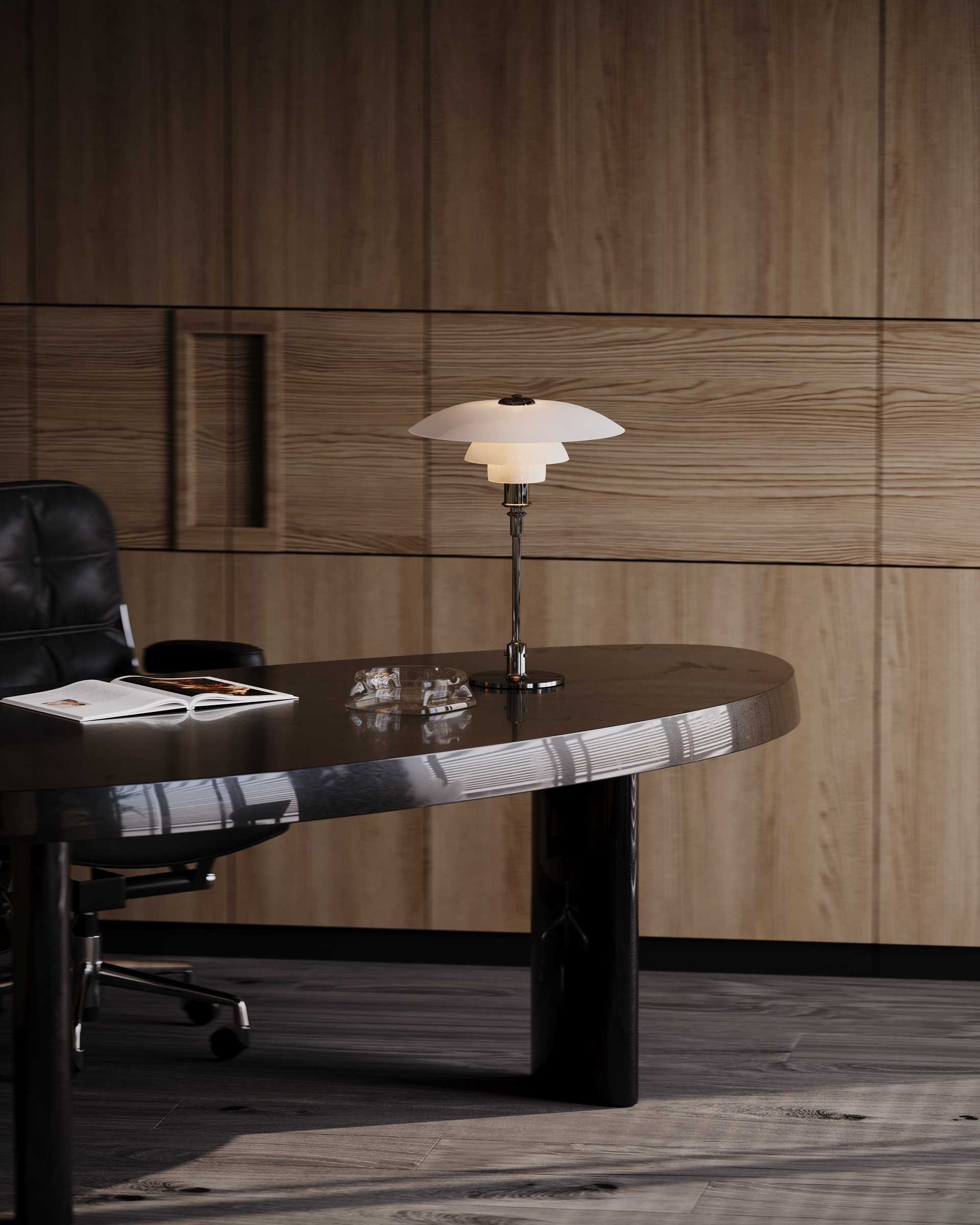
The Eames Lounge Chair is a product with a strong character, shaped by both its form and materials. The combination of warm, reddish wood and cool, glossy metal creates a chracter thatfeels both modern and timeless. Resembling a modern sculpture, the chair is not merely a piece of furniture-it embodies the essence of design through its careful balance of visual form and functional comfort. With all these qualities in mind, I chose to place the chair in a working room. I integrated this iconic piece into a project I used as a reference. By the combining oak wood, black stain and chrome metal elments, I aimed to create a calm and harmonious concept within space. For added functionality, I included open shelving above half-height closed cabinets. To ensure that the chair's sculptural form would not compete with the rest of the interior, I adopted a minimal language and introduced subtle variation through directional shifts in the wood grain.
About The Eames Lounge Chair,
The Eames Lounge Chair was designed by Charles and Ray Eames, who worked as siblings and partners. With its blend of classical and modern aesthetics, it serves as a bridge between the past and the future in a single object. During the design process, The Eames duo inspired by the form of a well-worn but much-loved baseball glove. Since the originally choosen wood has become endagered, the chair is now produced using various alternative wood types. One of the most remarkable features of this iconic piece its perfectly designed ergonomic proportions. Today, the Eames Lounge Chair continues to be produced under license by both Herman Miller and Vitra.
serie up 2000
gaetano pesce / 2000
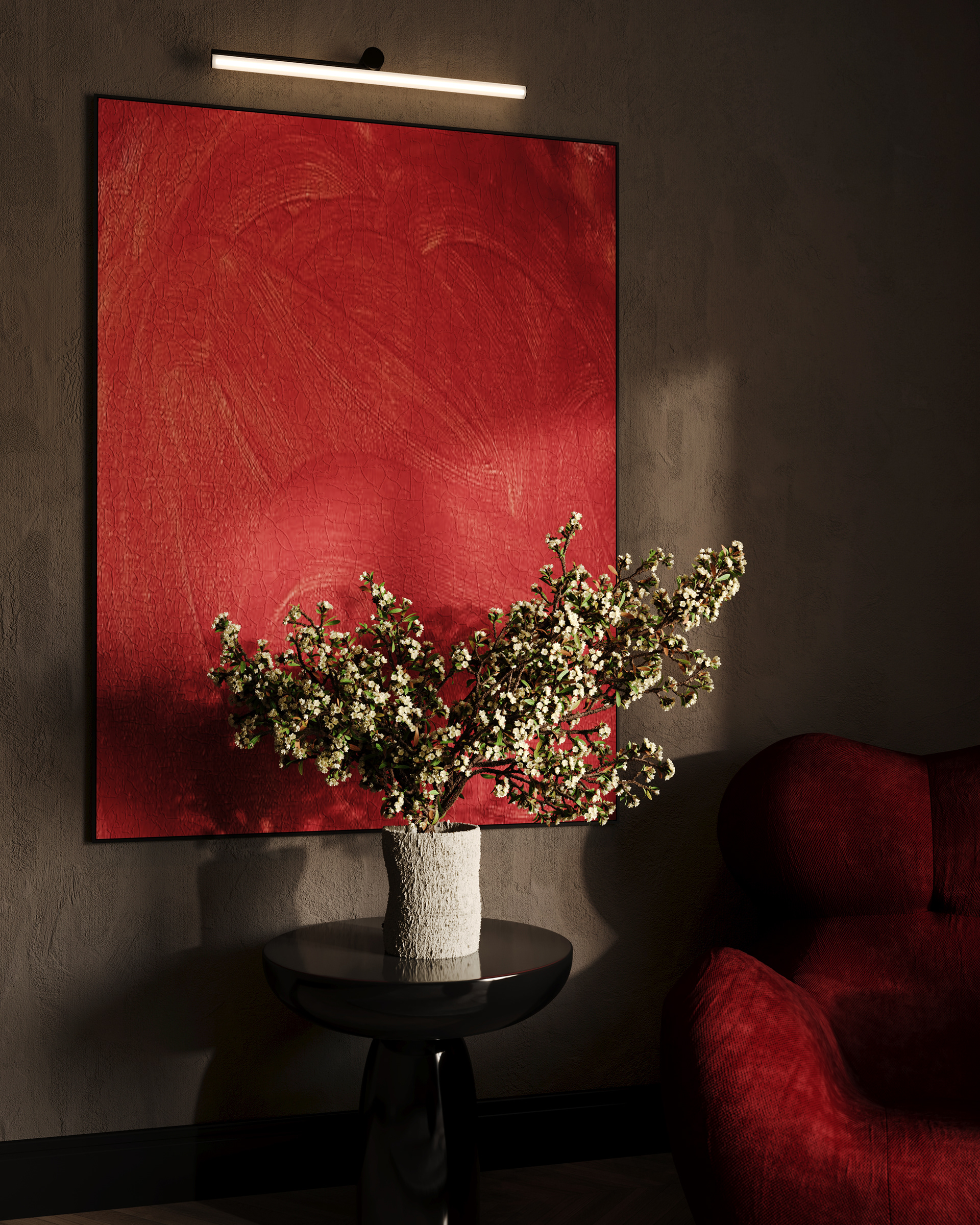
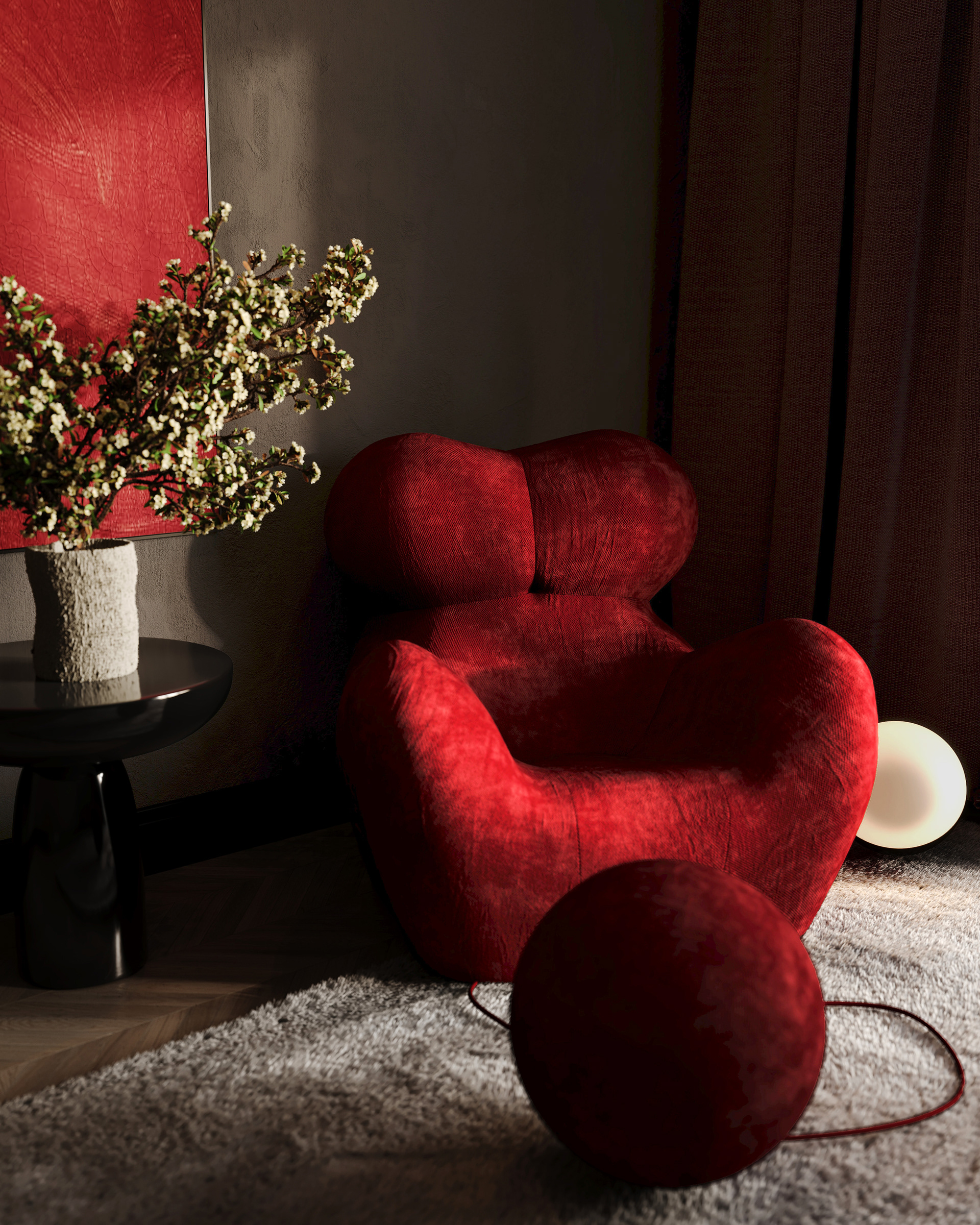
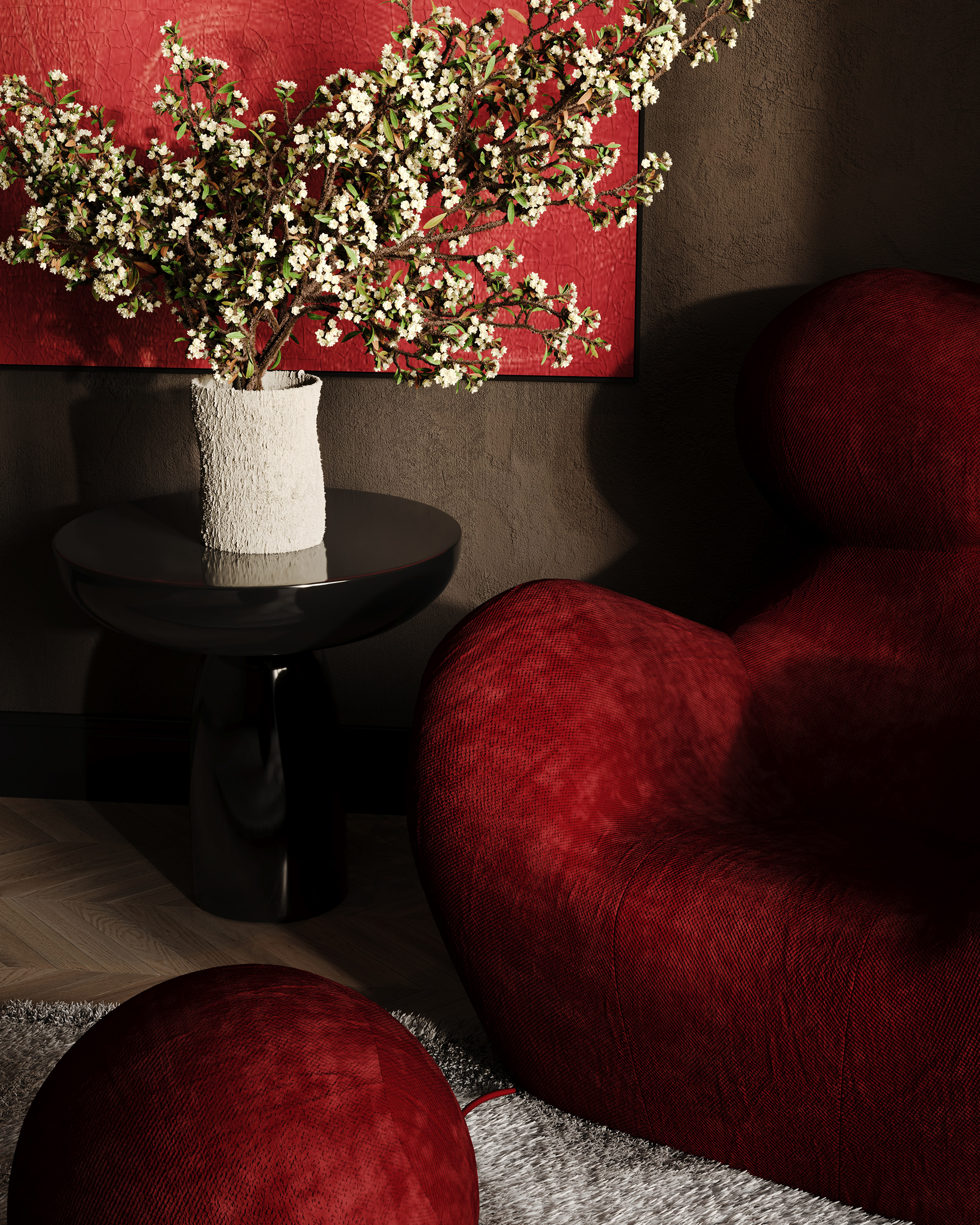
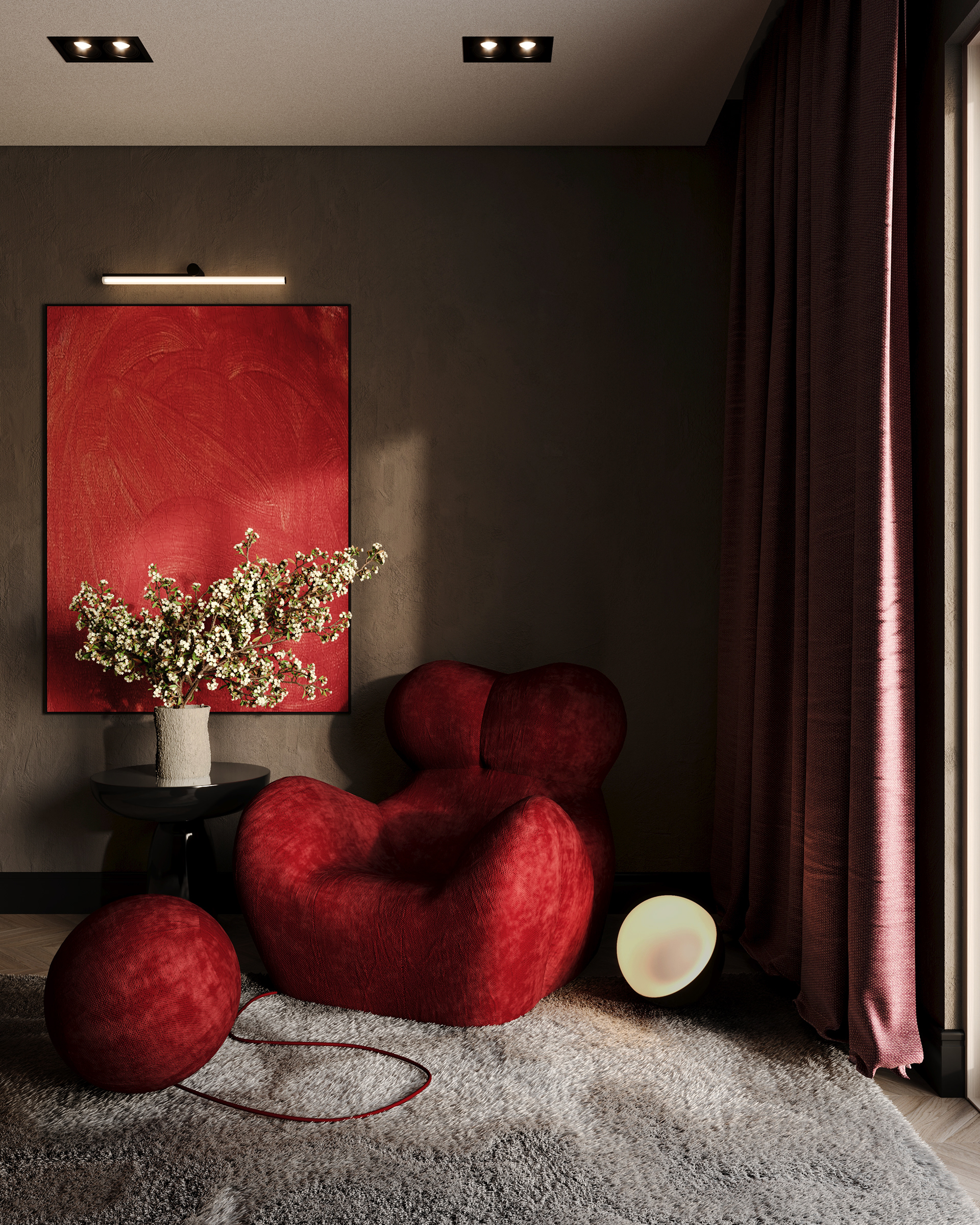
The Serie Up 2000 possesses an embracing aesthetic with its sculptural form, drawing captivating attention in any space. With its dynamic shape and wide range of color options, i find it suitable for diverse conceptual approaches. I chose to use this design in a lounge area, selecting a palette of gray, black and shades of red. My aim was to create a welcoming atmosphere while emphasizing the role of color through the presence of an artwork.
About the Serie Up 2000,
Serie Up 2000 was designed by Gaetano Pesce in 2000. With its womb-like form, it carries anthropomorphic associations. The accompanying ottoman creates an illuminating symbol of captivity. Pesce designed this chair as a metaphor for the social and internal constraints of women. The design stands as one of the pioneers of the Radical Design movement, bringing emotion to forefront rather form by merging desgin with industrial production.






